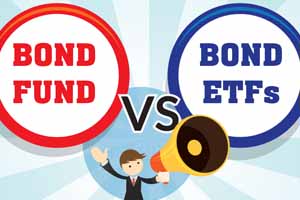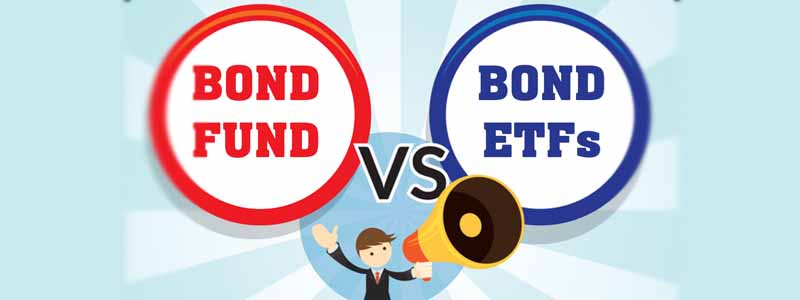
What are Bond ETF?
Among the plethora of investment options available in India, bond exchange-traded funds often go unnoticed due to a lack of awareness. Bond ETFs are a passive investment option that mirror indices tracking debt instruments like government or corporate bonds. The defining characteristic of a bond ETF is that the units of bond ETFs are traded on the stock exchanges, just like other listed securities. Bond ETFs primarily are of two types, ETFs that invest in bonds with different maturities and ETFs that invest in bonds with similar maturities.
The key features that define bond ETFs are cost-effectiveness, transparency and the tradability of the units. Bond ETFs mostly mirror an underlying index of bonds, which requires minimal management by the fund manager. The underlying portfolio of a bond ETF largely remains the same which eliminates the need for frequent buying and selling and thus reduces the operational costs. Since the units of a bond ETF are traded on the exchanges, the net asset value of the fund can be accessed in real-time. The underlying asset mix is also declared on a daily basis, which provides a sense of transparency to bond ETF investors.
What are bond mutual funds?
Bond mutual funds and bond ETFs both invest in debt securities, which naturally leads to the bond funds vs bond ETFs debate. Before trying to figure out which is the better investment, let us have a clear idea of bond mutual funds. Just like equity mutual funds, bond mutual funds collect money from investors to invest in bonds. The mutual funds can either be passive funds tracking indices or actively managed funds. Fund managers of active debt funds frequently buy or sell bonds to generate above-average returns for the investors, which increases the cost of the fund. Bond funds are of two types—open-ended and closed-end funds.
One does not require a brokerage account to invest in bond mutual funds. The units of a bond mutual fund can be directly bought and sold to the asset management company. Investors can enter or exit an open-ended fund whenever they wish to, subject to exit load. The open-ended funds declare the net asset value on a daily basis.
Differences between bond ETF and bond mutual funds
Bond mutual funds are similar to bond ETFs in a variety of ways, but there are some key differences. The primary difference is the tradability of the units. Units of a bond ETF can be traded in real-time on the exchanges during the market hours like other listed securities. Units of open-ended debt mutual funds can be traded during business hours, but units are allotted or redeemed as per the cut off time. If you invest before 3 PM on a day, fund units are alotted at the day's NAV. After that, units will be alotted at the NAV of the next business day. The Net Asset Value of debt funds is declared at the end of the trading day, which is why gains or losses cannot be realised in real-time like bond ETFs. The easy tradability of bond ETFs also provides flexibility to the investors, as the units can be bought on margin and can also be shorted. If the transparency of the investment is considered, bond ETFs are considerably more transparent than bond mutual funds. An investor is not informed about the underlying assets of a bond mutual fund daily, bond funds generally declare their portfolios at the end of every month. Contrarily, the underlying assets of a bond ETF are declared on a daily basis.
In the bond fund vs bond ETF investment debate, the final decision would rest with the investor considering his/her investment horizon, risk profile and return expectations. Bond ETFs are substantially cheaper than bond funds, which boosts the returns in the long run. While a bond fund may charge around 2% as expense ratio, bond ETFs will charge a fraction of the amount. In a nutshell, bond ETFs are more cost-efficient, offer better liquidity and are more transparent than bond funds.
MUTUAL FUND INVESTMENTS ARE SUBJECT TO MARKET RISKS, READ ALL SCHEME RELATED DOCUMENTS CAREFULLY.
Trending Articles
MUTUAL FUND INVESTMENTS ARE SUBJECT TO MARKET RISKS, READ ALL SCHEME RELATED DOCUMENTS CAREFULLY.















